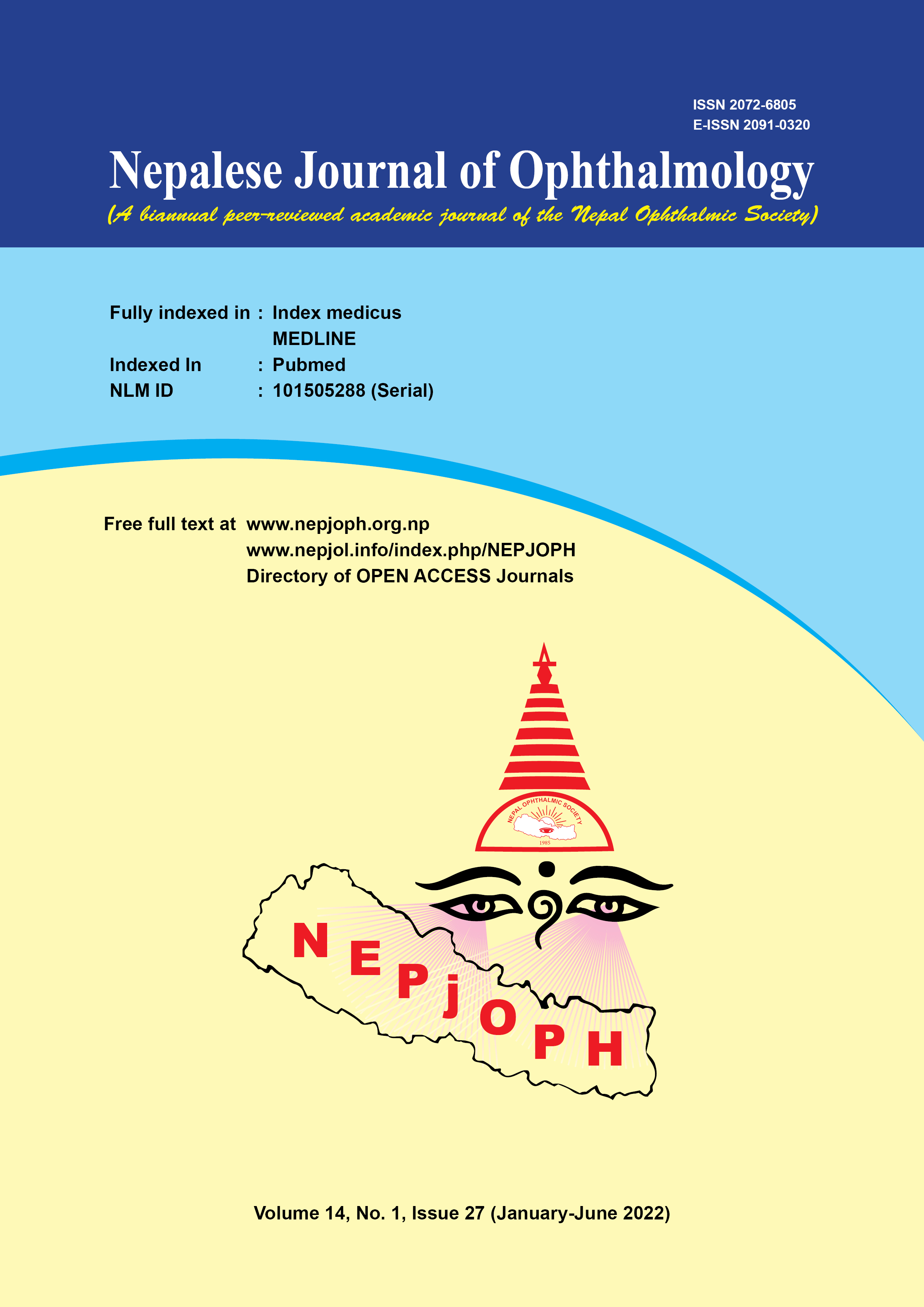Knowledge Assessment on Cortical Visual Impairment Among Ophthalmologists in Nepal
DOI:
https://doi.org/10.3126/nepjoph.v14i1.38606Keywords:
Cortical visual impairment, Knowledge, OphthalmologistsAbstract
Introduction: Cortical visual impairment (CVI) in children is a retro chiasmal visual tract disorder where there is with an impairment in the visual acuity and/or functionality of vision-guided task, including motor planning in the presence of normal ocular findings or minimal ocular morbidity. The study was conducted to assess the knowledge about CVI among ophthalmologists practicing in Nepal.
Materials and methods: This was a cross sectional study. Data collection was done by administering a preformed, validated questionnaire that was sent via email to all the ophthalmologists registered under the Nepal Ophthalmic Society. The email mentioned the aim of the study along with the questionnaire.
Results: A total of 146 (37.82%) ophthalmologists responded to the questionnaire. Forty four percent of the participants were general ophthalmologists, 28% were pediatric ophthalmologists and 67% were ophthalmologists from other subspecialty. The median age of participants was 37.6 years. Most of the ophthalmologist had a good knowledge about the cause, common risk factors, clinical risk factors, management and prognosis of CVI. However only 29.5% of participants were aware of the investigation of choice for diagnosing CVI and 31.7% were aware of the leading causes of visual impairment in the developed countries. The study also established that the knowledge score was higher in pediatric ophthalmologists than the general ophthalmologist and ophthalmologists from other specialties.
Conclusion: Most of the ophthalmologists had a good knowledge about the cause, common risk factors, clinical features, management and prognosis of CVI. However only a limited number of participants were aware of the investigation of choice for diagnosing CVI and the leading causes of visual impairment in the developed countries. Majority of the participants rarely examined patients with CVI which does not correlate with the high prevalence of perinatal hypoxia, the commonest cause of CVI, in our country.
Downloads
Downloads
Published
How to Cite
Issue
Section
License
Copyright (c) 2022 Nepalese Journal of Ophthalmology

This work is licensed under a Creative Commons Attribution-NonCommercial-NoDerivatives 4.0 International License.
This license enables reusers to copy and distribute the material in any medium or format in unadapted form only, for noncommercial purposes only, and only so long as attribution is given to the creator.




